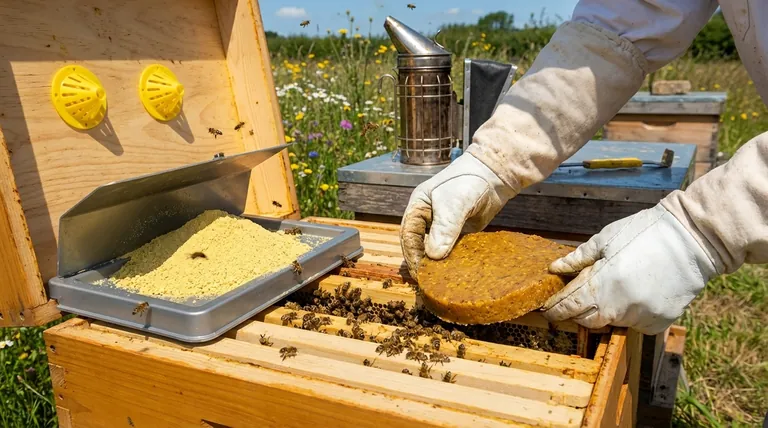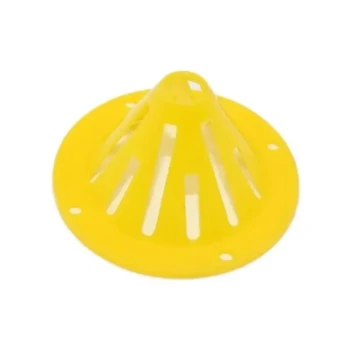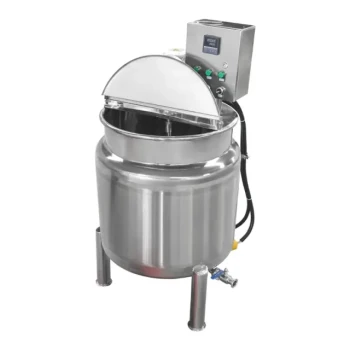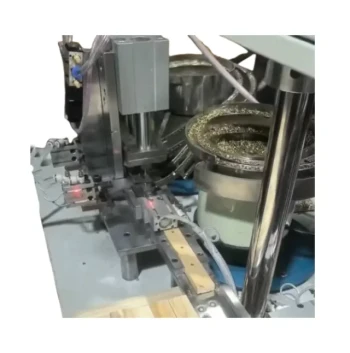The two primary forms for feeding pollen or pollen substitutes to honey bees are a moist, doughy patty and a dry powder. Patties are placed directly inside the hive to intensely stimulate brood production, while dry powder is offered in an external feeder to supplement the colony's general nutrition in a less direct manner.
The choice between a patty and a powder is not just about form, but about strategy. Patties are an aggressive tool to force colony growth, while powders are a passive support system that mimics natural foraging.

Understanding Pollen Patties
What They Are and How They Work
Pollen patties are made by mixing a protein-rich pollen substitute with a binder, typically sugar syrup, to create a moist, doughy consistency.
This form is highly attractive to bees because it is immediately consumable within the hive, regardless of outside weather conditions.
The Primary Goal: Stimulating Brood Rearing
The direct placement of a high-protein food source inside the hive is a powerful signal to the queen. It simulates a rich natural pollen flow, encouraging her to dramatically increase her egg-laying rate.
This, in turn, stimulates the production of more nurse bees to care for the expanding brood population.
How to Feed Patties
Patties are placed directly on top of the frames within the brood chamber. This ensures the house bees responsible for processing food and feeding larvae have immediate access to the protein.
Understanding Dry Pollen Feed
What It Is and How It Works
This method involves offering a dry, powdered pollen substitute in a feeder located outside the hive. Foraging bees collect the powder on their legs, just as they would natural pollen, and carry it back to the hive.
The feeder must be designed to keep the powder dry and protected from rain and dew.
The Primary Goal: General Nutritional Support
Dry feeding is a less aggressive way to supplement a colony's diet during a period of low natural pollen (a pollen dearth). It provides resources without actively forcing the queen into a high rate of egg-laying.
It allows the colony to regulate its own consumption based on its perceived needs, more closely mimicking the natural collection of resources.
How to Feed Dry Pollen
The powder is placed in a dedicated feeder some distance away from the hive entrance to encourage natural foraging behavior.
Understanding the Trade-offs and Critical Timing
Patties: Targeted but Risky
Because patties are placed inside the hive, they offer guaranteed, targeted nutrition. However, if the colony is weak and cannot consume the patty quickly, it can attract pests like small hive beetles or wax moths.
The potent stimulus they provide can also be a significant risk if timed incorrectly.
Dry Feed: Natural but Uncontrolled
Dry feeding is less likely to attract in-hive pests and allows bees to forage naturally. The primary drawback is a lack of control.
Bees will not fly in poor weather to collect it, and the feed is accessible to bees from other colonies or even other insects. Consumption is entirely dependent on the colony's initiative.
The Critical Importance of Timing
Feeding a pollen substitute, especially a patty, is a strategic decision that can backfire. Inducing a massive population boom too early in the season, before natural nectar is available, can be catastrophic.
The large population of new bees will consume stored resources rapidly, potentially leading to colony starvation if a nectar flow does not materialize on time.
Making the Right Choice for Your Colony
Choosing the correct feeding method depends entirely on your specific management goal for the hive.
- If your primary focus is to rapidly build colony population for pollination or ahead of a major nectar flow: Use pollen patties for direct, targeted, and powerful brood stimulation.
- If your primary focus is to provide general nutritional support during a pollen shortage without forcing population growth: Use dry pollen feed to let the colony self-regulate its intake.
Ultimately, understanding these two methods empowers you to use supplemental feeding as a precise tool for colony management.
Summary Table:
| Form | Primary Goal | Placement | Key Consideration |
|---|---|---|---|
| Pollen Patty | Intensely stimulate brood production | Inside the hive, on top of frames | High-risk, high-reward; can attract pests if not consumed quickly |
| Dry Powder | Provide general nutritional support | Outside the hive, in a protected feeder | Less direct control; depends on bees' foraging initiative |
Equip Your Apiary with the Right Tools for Success
Strategic feeding is key to maintaining strong, productive colonies. HONESTBEE supplies commercial apiaries and beekeeping equipment distributors with the high-quality supplies needed to implement these feeding strategies effectively.
From durable patty molds to reliable external feeders, our wholesale-focused operations ensure you have the right equipment to support your colonies' health and growth.
Contact HONESTBEE today to discuss your wholesale needs and how our beekeeping supplies can help you achieve your management goals.
Visual Guide

Related Products
- Slatted Porter Style Bee Escape for Rapid Hive Clearing
- Premium Traditional Copper Bee Smoker with Bellows
- Professional Spring-Action Queen Catcher Clip
- Long Langstroth Style Horizontal Top Bar Hive for Wholesale
- Electric Honey Press Machine for Squeezing Honey Comb Press Equipment
People Also Ask
- How should the Bee Escape Board be placed under the honey supers? Master the Correct Orientation for a Calm Harvest
- What is the purpose of Triangular Escape Boards? Achieve a Calm, Efficient Honey Harvest
- What is the correct orientation for placing Triangular Escape Boards? Ensure a Stress-Free Honey Harvest
- How is a bee escape board used in a hive? A Simple Guide to a Calm, Chemical-Free Honey Harvest
- What was the result of using the bee escape board? Achieve a Calm, Low-Stress Honey Harvest
















